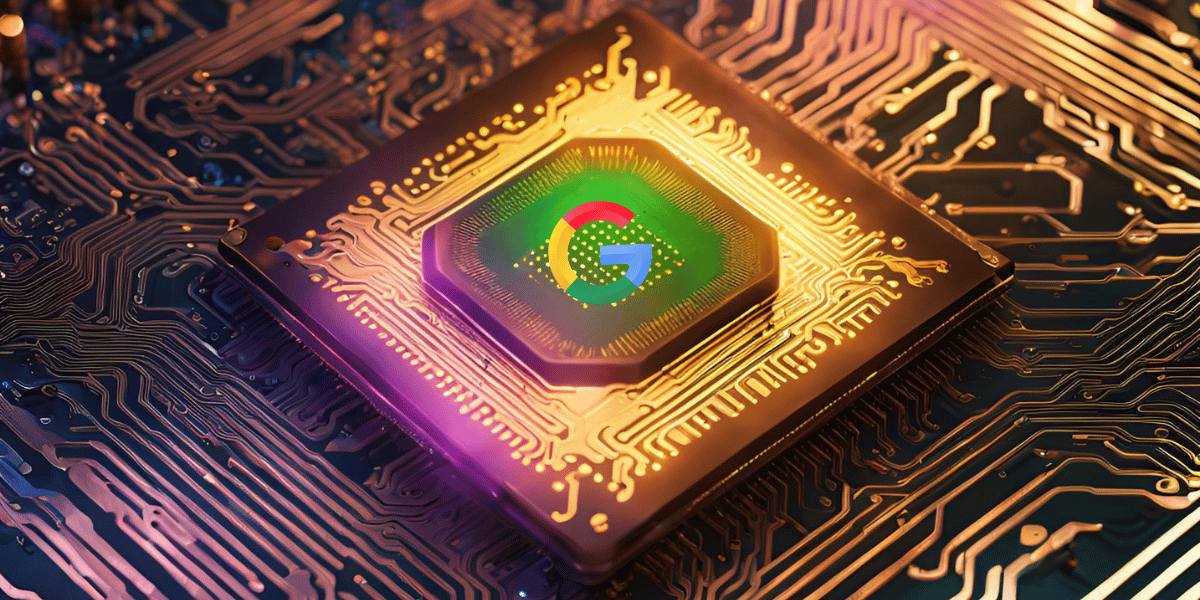We are fascinated by the Google AI Quantum chip: Willow chip is a big step forward and is today’s groundbreaking solution to future challenges. Imagine one supercomputer doing everything in just a few seconds. A computer that can do the work that today’s most powerful supercomputers would take millions of years to do. In December 2024 google revealed the Willow Quantum chip.
Last, few decades quantum computers have been rolling in just a dream. But now, Google has made it a reality. These hardware innovations collectively enable Google Quantum AI to push the boundaries of quantum computing, achieving milestones like quantum supremacy and advancing toward practical applications.

Willow performed a standard benchmark computation in under five minutes that would take one of today’s fastest supercomputers 10 septillions (that is, 1025) years.
However, experts say it will take more time to create a fully functional quantum computer to solve real-world problems. Quantum computing is still in the experimental stage and requires significant research and development to unlock its full capabilities.
Table of Contents
ToggleWhat Makes Quantum Computers Different from Classical Computers, and How Do Quantum Computing and Quantum Mechanics Work? Why Are They Considered Game-Changers and Problem-Solvers?
Google Quantum chip AI’s Willow is a cutting-edge quantum processor that represents a significant advancement in quantum computing technology. Building on the foundation of Google’s previous Sycamore processor, Willow features improved 53 qubit performance, scalability, and error correction capabilities. It is designed to address the inherent challenges of quantum computing, such as maintaining qubit stability and reducing computational errors.
Willow operates by leveraging the principles of quantum mechanics, enabling it to process information in ways that are impossible for classical computers. It uses qubits, which can exist in multiple states simultaneously, to perform complex calculations at exponentially faster speeds. This capability allows quantum processors like Willow to tackle problems that would take traditional supercomputers an impractical amount of time to solve.
One of Willow’s key achievements is its demonstration of enhanced error correction, a critical milestone for scaling quantum systems. This progress brings researchers closer to realizing fault-tolerant quantum computing, which is essential for practical applications.
Potential uses of Willow include breakthroughs in drug discovery, optimization problems, materials science, and cryptography. While still in the experimental phase, Willow underscores Google’s commitment to advancing quantum computing and its transformative potential across industries, paving the way for a future of unprecedented computational power.
What is the great hardware approach Google quantum chip AI that made it possible?
Google Quantum AI’s Willow processor succeeds due to its advanced hardware innovations:
1. Superconducting Qubits:
Made from superconducting materials and cooled to near absolute 0, these qubits maintain quantum states longer, ensuring reliable calculations.
2. Error Correction and Surface Codes:
A major breakthrough is the implementation of quantum error correction using surface codes. This method encodes logical qubits into multiple physical qubits, reducing the impact of noise and errors. Willow demonstrated scalable error correction, a critical step toward fault-tolerant quantum computing.
3. Cryogenic Systems:
Special refrigerators keep qubits stable at extremely low temperatures close to 10 millikelvin, colder than outer space.
4. High-Reliability Control Systems:
Google developed Faithfulness control electronics and microwave systems to manipulate and measure qubits with high accuracy. This ensures reliable quantum gate operations and reduces decoherence.
5. Scalability:
Google’s modular architecture focuses on scaling up the number of qubits without significantly increasing error rates. This involves advances in chip fabrication, qubit connectivity, and interconnects.
These hardware innovations collectively enable Google Quantum chip AI to push the boundaries of quantum computing, achieving milestones like quantum leadership and advancing toward practical applications
Before wrapping up, let me explain some key terms to make things clearer for you.
QUBITS
Classical computers, like the one you’re using now, work with bits that represent either 0 or 1. Quantum computers, on the other hand, use qubits—tiny particles like electrons or photons—that can represent 0, 1, or both at the same time. This gives quantum computers much greater processing power than traditional computers.
Companies like IBM and Rigetti Computing create qubits using superconducting circuits cooled to temperatures colder than deep space. Others, like IonQ, use special vacuum chambers to trap individual atoms on a silicon chip.
Quantum computers use qubits to perform calculations, but as the number of qubits increases, so do the chances of errors. These errors happen because qubits are very sensitive and easily disturbed by their environment.
Google Quantum chip AI leader -Hartmut Never, says that managing errors is one of the biggest challenges in quantum computing. Google’s Willow chip made a breakthrough by reducing errors even as it added more qubits—a historic achievement called “below the threshold,” which means scaling up while keeping errors under control.
Superposition
Quantum computers are much faster than supercomputers because qubits can be 0 and 1 at the same time—a state called superposition. In this state, qubits represent all possible combinations of 0 and 1 and calculate multiple solutions at once. When the calculation is done, the qubits collapse to either 0 or 1, giving the final result.
Entanglement
Entanglement happens when two qubits share a single quantum state. If you change one qubit, the other qubit instantly changes predictably, no matter how far apart they are.
Decoherence
Decoherence occurs when qubits lose their quantum state due to environmental interference, such as temperature changes or vibrations. This is why quantum computers need super-cold circuits or vacuum chambers to keep qubits stable.
Interference
Interference happens when qubits in superposition interact. Their probabilities can either strengthen (constructive interference) or cancel out (destructive interference). This occurs because quantum particles behave like waves like electrons and photons.
In summary, Google’s Willow quantum chip is a pivotal development in the journey toward practical quantum computing, offering a glimpse into a future where computational limitations are significantly reduced, and complex problem-solving becomes more accessible.


